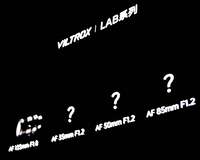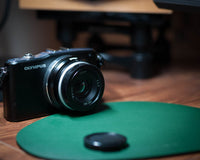I’ve looked at a few lenses from Pergear recently and was impressed by the solid build quality and value for money. So when Pergear contacted me and told me they have a new macro lens and asked if I’m interested to do a review, I said yes, please send me a sample immediately as I’m really interested to see what kind of macro lens they have prepared this time.
The lens we are looking at today is the Pergear 60mm 2x macro lens. It’s a macro lens designed for APS-C cameras so the equivalent focal length is around 90mm which is one of the most common focal lengths for macro lenses.
This Pergear 60mm 2x macro lens can take macro photos at up to 2x magnification while still able to focus to infinity. The best thing is, the price is also very affordable. At $199 it is also one of the cheapest 2x macro lenses in the market.
Key Features:
2:1 Magnification
11 Elements in 8 Groups
10-blade diaphragm
Full metal body
Bright f/2.8 maximum aperture
19.1cm minimum focusing distance
De-clicked Aperture Ring
Multi-layer Coating
As you have probably expected, this is a completely mechanical lens. There are no electronic contacts and no autofocus. Everything is manual, manual focus, manual aperture control.
The size of the lens is not small but still reasonable for a 2x macro lens. It is definitely a little bit heavy at around 600g. When I mount it on a Nikon Z50, the balance is OK I say because the Z50 has a pretty decent size grip. I imagine it might feel a bit front-heavy if you mount it on one of the smaller cameras especially if it doesn’t have a big grip.
The aperture ring is de-clicked and located at the back of the lens. Personally, I would prefer it to be located at the front of the lens instead as there were quite a few times I found myself turning the aperture ring by mistake when shooting with this lens. However, I think it’s really an objective opinion as some of you might love the aperture ring located right at the back like this Pergear lens.
The focus ring is a bit tight but smooth overall. The focus throw is around 90 degrees which are not that long, but because the focus ring is on the tighter side so adjusting the focus precisely is still reasonably easy. I can hear a tiny tiny bit of metal grinding noise when rotating the focus ring. Nothing major and you may not even hear it unless you are shooting in a quiet indoor environment. This is also not uncommon for the budget lenses but I thought I should mention it. Since I’ve only used the lens for 2 weeks, maybe it will get a bit better after using it for a longer time. Overall, it is a very solidly built lens and for a budget lens, I think Pergear did a great job.
The biggest selling point for this lens is definitely its ability to take macro photos at 2x magnification while still being able to focus to infinity. It means you can take photos or videos at a much higher magnification than the typical 1x macro lenses in the market. While you still can use it for landscape, portrait, or any other usual photos.

When shooting macro at 2x magnification, the shooting distance between the front of the lens to the subject is just over 5cm or 2 inches. That is really not bad at all for a 2x macro lens and it should give you enough room if you need to light up the scene using an external light source. Using a ring flash would be the best way to light up your subject but I tried using normal LED lights with great success as well.
Unlike some other macro lenses which the front of the lens would extend when you are changing the focus distance, the Pergear 60mm macro has a fixed-length design which is great as you don’t have to worry about the lens would suddenly touch/knockdown your subject when you are focusing, especially when the lens is on a tripod.
When shooting at normal shooting distance (i.e. non-macro), the center sharpness is really quite good at f/2.8 already. Stop down to f/4 increases sharpness a bit. f/5.6 gives you the best center sharpness. If you stop down the lens further, from f/11 sharpness starting to drop because of diffraction.
The corner at f/2.8 is a little bit soft. It would become quite a bit sharper at f/4. When you stop down to f/5.6, the corner becomes also quite sharp as well.
So overall for most kinds of photos, I would be happy to shoot at f/2.8 or f/4. If I’m shooting landscapes I would stop down to f/5.6 for good corner sharpness.
When shooting macro photos at 1x magnification, the overall sharpness is already excellent at f/2.8. When stopped down to f/4, the sharpness would only improve marginally.
Stop down the lens further to f/8, the image starting to become softer, and also the contrast drops slightly. So I would recommend keeping the aperture at f2.8-/5.6 if possible for best image quality.
At 2x magnification, I’m a bit surprised but the sharpness is quite good at maximum aperture f/2.8 already. I’m surprised because I was really expecting the image would be quite soft at f/2.8 for a budget 2x macro lens. But turns out it’s not the case, f/2.8 is definitely very usable. If you want the best sharpness, then you should stop down to f/5.6
Bokeh from the Pergear lens is quite round and not too nervous. However, I can see a bit of onion pattern in my test photos. When I stop down the lens, the bokeh still remains relatively round, even stopping down to f/11 thanks to the curved aperture blades.
In terms of vignetting, there is not that much vignetting even at the maximum aperture. If you stop down the lens slightly to f/4 then vignetting is only barely visible. Stop down the lens further and there is virtually no vignetting. Vignetting is very well controlled by this lens.
Chromatic aberration is also very well controlled as well. When I look at my real-life photos, I don’t really see much chromatic aberration at all. Even my LOCA test photo shows a very small amount of color fringing, this is very impressive for a budget macro lens.
My test brick wall photo shows this lens has a small amount of pincushion distortion when shooting my usual brick wall. If I take the photo to Lightroom and apply a -5 distortion correction adjustment, then it would make the distortion almost not noticeable.
Lens flare control is average with this Pergear lens. While there are some budget lenses that suffer a lot worse from lens flare, I can see quite a bit of lens flare and uneven brightness across the frame when shooting into the sun.
Usually, when we are buying a macro lens, the sun star is not a really important thing and I usually would not even mention it when reviewing macro photos. However, with this Pergear 60mm 2x macro lens, if you stop down the lens to around f/11 you can actually get some nice looking 10 points sun stars as well. I wasn’t expecting that but I’m definitely not complaining.
The lens has very serious focus breathing. However, this is completely normal for macro lenses because a group of lens elements has to move a long distance when you are changing the focus from infinity to macro focus distance.
While this Pergear lens is designed for APSC cameras, I also tried it on a full-frame Nikon Z6 and see what kind of results I got.
Turns out this lens is actually quite usable on a full-frame camera. At least if you use it for shooting portraits.
When shooting photos at f/2.8 and focus distance is at infinity, there is some noticeable vignetting. However the vignetting would almost completely disappear when the focus distance moved closer to around 0.6m / 2 feet If I continue to focus to a closer distance, then a dark circle starts to appear near the edge of the frame.
The vignetting that appear when the focus distance is between infinity to 0.6m / 2 feet is caused by the front cover of the lens. I imagine if you can somehow remove that front cover, you will have even less vignetting when shooting on a full-frame camera at an infinite distance. Of course, attempting to remove that might end up completely destroying the lens so don’t try it yourself.
Overall, I’m very surprised by this Pergear 60mm f/2.8 2x macro lens. Even when taking macro photos 1x and 2x magnification, the image quality is already really good at f/2.8! I really wasn’t expecting that for a budget 2x macro lens. Chromatic aberration, vignetting is also all very well controlled.
But of course, as a budget lens, this is not a perfect lens. I’ve mentioned some of the flaws in this review, such as the lens flare.. However, I think the overall image quality is still very good for a lens at this price. The ability to shoot macro at 2x is also one thing that makes this lens stand out from most other budget macro lenses in the market.
Being able to shoot with a full-frame camera at a normal focus distance is a bit of a surprise bonus. But I definitely would not recommend you to buy this lens if you only have a full-frame camera.
If you are looking for a macro lens for your APSC camera without spending too much money, this is definitely one lens you should check out.
Know more about Richard Wong, check photobyrichard.












